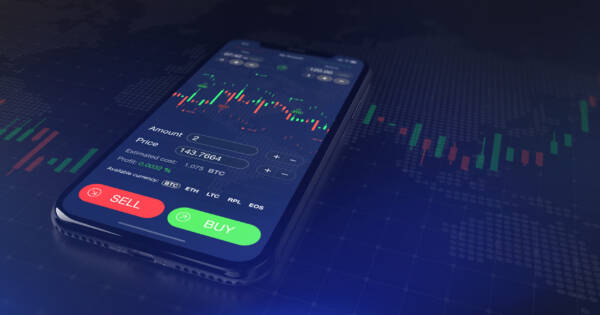Being financially literate has never been more important, especially as many people shoulder full responsibility for their long-term financial security. Building confidence as an investor starts with understanding the language of the markets and the common terms used across financial news, conversations, and research. Whether you manage your own portfolio or simply want to make smarter decisions, knowing key investing definitions lays the groundwork for clearer choices, better strategies, and more control over your financial future.
Stock Market / Stock Exchange
The stock market is a place where you can buy, sell, and issue shares of publicly held companies. The term “stock exchange” is used interchangeably with the term “stock market.” There are stock markets in countries all over the world. Some of the largest and best-known stock markets include The New York Stock Exchange (U.S.), the Toronto Stock Exchange (Canada), the London Stock Exchange (U.K.,) and the Tokyo Stock Exchange (Japan).
Stock
A stock (also known as a share) is a type of financial security that signifies part ownership in a company. If you buy some Apple or Google stock, for example, you become a minority shareholder. That means you own a portion (or share) of the business. If the business is financially successful, you’ll share in the riches based on how much stock you own.
Stockbrokers
A stockbroker is an institution or individual that buys and sells stocks on behalf of clients or customers. Stockbrokers settle trades and make sure that cash or securities get to their clients safely and within a specified period of time. Many people buy and sell stocks themselves through online and discount brokerages. So you’re not required to use a stockbroker to start investing. It’s also possible to buy stock without a broker through programs such as dividend reinvestment plans or dividend reinvestment programs (DRIPs).
Blue Chip Company
The term “blue chip company” is a form of praise. A company that has a history of solid earnings, regular and increasing dividends, and an impeccable balance sheet is called a “blue chip.” Consider them the closest thing to a sure thing when it comes to a solid return on your investments.
Dow Jones Industrial Average (DJIA)
The Dow Jones Industrial Average is the most popular and widely used measure of the U.S. stock market. It consists of a price-weighted list of 30 highly traded blue-chip companies. The Dow Jones index is watched by investors as a barometer (or indicator) of the health and direction of the stock market.
There are two other main indexes to watch. The NASDAQ Composite and the S&P 500 are similar to the Dow Jones. You can get a quick snapshot of how the economy is doing based on the strength (or weakness) of these three stock indexes.
Bonds
A bond is a fixed-income instrument that represents a loan made by an investor to a borrower, typically corporate or governmental. Bonds are used by companies and governments to finance large projects and their ongoing operations. Owners of bonds are debt holders, or creditors, of the issuer.
Bonds issued by the government are considered the safest and most secure type. All bonds typically come with fixed interest payment dates that are to be made by the borrower, which is usually a municipality or the federal government. Overall, bonds are more stable than stocks. While stocks trade daily on a stock exchange, the value of bonds is much less prone to dramatic fluctuations.
Bull Market
When most stock prices rise over an extended period of weeks, months, or years, it’s said to be a “bull market.” A bull market is great for your current investments, as they are going up in value. Similarly, when someone is enthusiastic about a particular stock, they are said to be “bullish” on it.
Bear Market
This is the opposite of a bull market. When stock prices fall or depreciate over an extended period of weeks, months or years, it is said to be a “bear market.” While this is bad for your current investments, it’s usually a good opportunity to buy stock at a reduced price, before it bounces back. People who have soured or turned negative on a stock are said to be “bearish” about it.
Mutual Funds
A mutual fund is a collection of stocks or bonds that are pooled together. In most cases, mutual funds are managed by a professional who works for a bank or investment company. The mutual fund manager picks the stocks or bonds that are held within it. The fund holds individual stocks or bonds, but investors buy units of the mutual fund itself. Mutual funds do not trade on a stock exchange during the day. Rather, buy and sell orders are collected throughout the day. Once the markets have closed, they are executed.
Exchange-Traded Funds
Exchange-traded funds (commonly called ETFs) are very similar to mutual funds. The difference is that they trade throughout the day on stock exchanges as if they were an actual stock. Many ETFs or “index funds” track a particular stock market or index, such as the S&P 500 or the Toronto Stock Exchange. Like mutual funds, ETFs can have tax advantages. However, ETFs tend to charge lower fees than mutual funds. This is because most ETFs are not managed by a professional. For this reason, ETFs are known as passive investments.
Hedge Funds
A hedge fund is a type of investment partnership. Hedge funds typically pool money from investors or partners, and engage in a wide range of investing activity. Hedge funds often make investments that are riskier than typical investments. For this reason, government regulations are used to protect people and their money by restricting who can invest in a hedge fund.
In most cases, you need to have a minimum amount of money (often $1 million or more) to gain entry to a hedge fund. Here’s a good way to think about it. Anyone can put their money into a mutual fund, but a mutual fund is limited in what it can invest that money in. On the other hand, a hedge fund limits who can put their money in but is free to invest money in almost anything.
Real Estate Investment Trusts
Investors often put money into real estate through a Real Estate Investment Trust (REIT). A REIT trades on an exchange like a stock and has special tax treatment. There are different types of REITs that specialize in various types of real estate. For example, if you wanted to invest in hotel properties, you could consider investing in a hotel REIT. They enable you to invest in real estate without having to actually buy and maintain a building or property. There are also REITs that let you invest in land with no buildings on it.
Commodities
A commodity is a raw material or agricultural product that can be bought and sold on an exchange. Commodities range from precious metals such as gold, silver and copper, to agricultural products such as coffee, wheat, or soybeans. Exchanges exist, such as the Chicago Mercantile Exchange, that deal primarily (though not exclusively) in the trading of commodities.
Asset Allocation
Asset allocation refers to the different types of investments you can hold, such as stocks, bonds, ETFs, REITs, and commodities. It also refers to the ways in which you allocate your money to different types of investments or assets. When you hold a lot of different investments, you are said to be “diversified.” If you place all of your money in a single stock, you haven’t allocated your assets very well.
Dividends
Dividends are a sum of money paid regularly by a publicly traded company to its shareholders out of its profits. If the company loses money, there are no dividends. They can be paid monthly or quarterly, with the latter being the most common case.
Companies can also issue dividends annually or issue special, one-time dividends to shareholders if they choose to do so. Dividends are often referred to as a form of “income” for shareholders. They are paid on a per share basis (for example, $0.50 per share). The more shares you own, the more money you’ll get from dividend payments.
Dividend Yield
The dividend yield refers to the percentage of a stock’s value that the company pays to shareholders. For example, if a stock is trading at $100 per share and the company pays a 5% dividend yield, then it could pay out $5 per share in dividends to its shareholders.
Fiduciary Responsibility
In most Western legal systems, including the U.S. and Canada, a fiduciary duty is the highest responsibility owed to another person. In the investing world, fiduciary responsibility refers to the requirement of publicly traded companies to put the interests of their shareholders ahead of their own. This often involves disclosing conflicts of interest or other potential legal issues.
Buying on Margin
Buying on margin refers to the practice of borrowing money to invest it. If you borrow to invest, you hope that the interest earned on your investments will outpace the interest charged on your loan. In many cases, investors who buy on margin are required to put up their entire portfolio or account balance as collateral. That can be a risky move. Because of the risky nature of buying on margin, most investors – particularly individuals – should instead use cash to buy stocks and bonds.
Market Capitalization
Market capitalization refers to the value of a publicly traded company. It’s calculated by taking all the outstanding shares of a company’s stock and multiplying it by the current stock price. For example, Tesla recently crossed the $100 billion mark in terms of market capitalization when its stock price surged up.
Price-to-Earnings (PE) Ratio
The price-to-earnings (PE) ratio tells you how many years it would take for a company to pay back its purchase price per share from after-tax profits, at current profits with no growth. In other words, the PE ratio tells you how much money you are paying for $1 of the company’s earnings. If a company is reporting a profit of $2 per share, and the stock is selling for $20 per share, the PE ratio is 10 ($20 per share divided by $2 per share = earnings of 10). Traders often look at the price-to-earnings ratio to tell if a particular stock is undervalued or overvalued.
Odds and Ends
Income Statement: An income statement shows a company’s revenues, expenses, taxes, and net income.
Balance Sheet: A balance sheet shows a company’s assets, liabilities, and shareholder equity.
Book Value: The value of a company if all of its liabilities were subtracted from its total assets.








